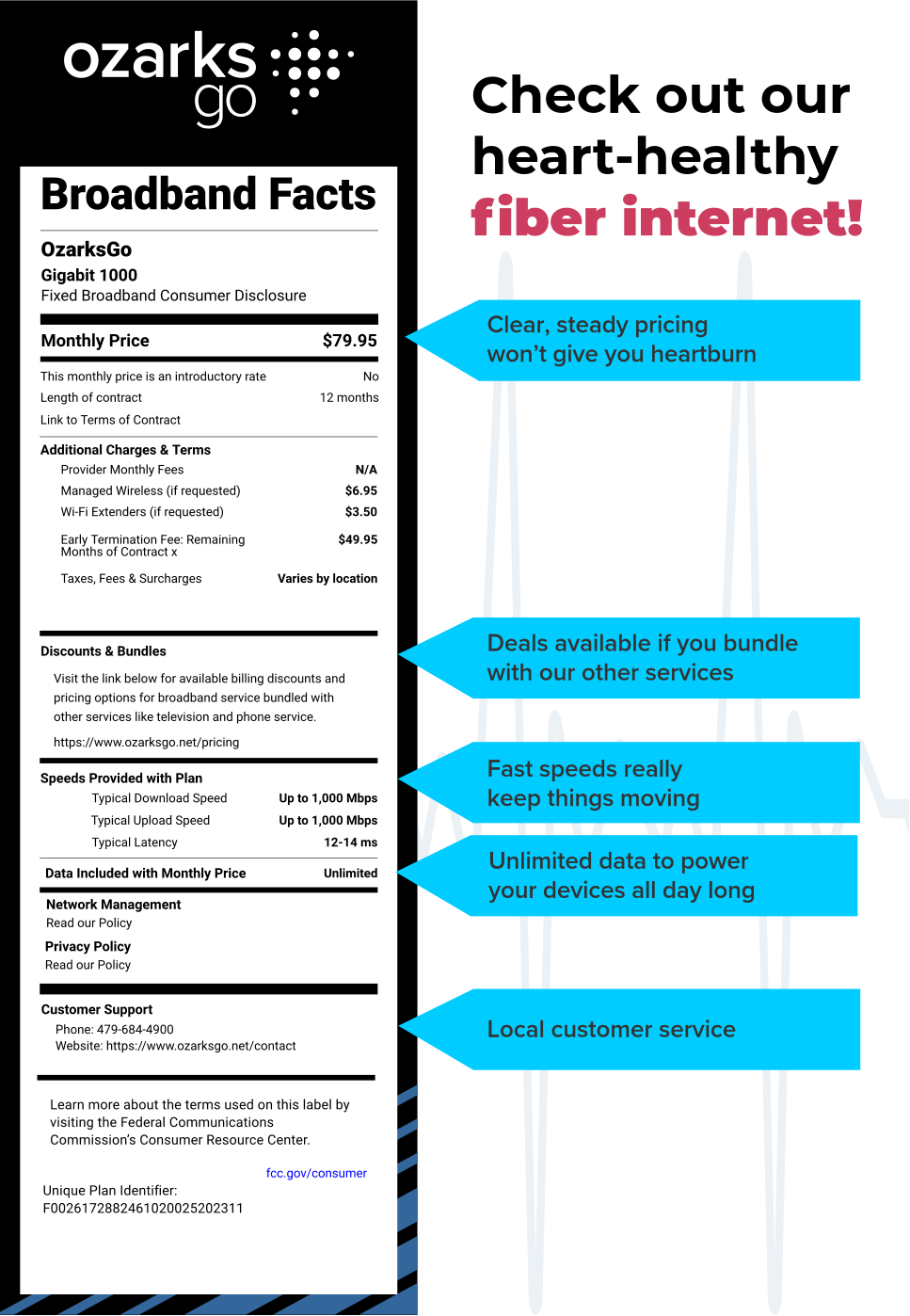What exactly is the new broadband facts “nutrition” label?
The new broadband facts nutrition label is an easy-to-read statement of basic information about available internet services that the Federal Communications Commission recently mandated when broadband (high-speed) internet service providers advertise the sale of their services.



